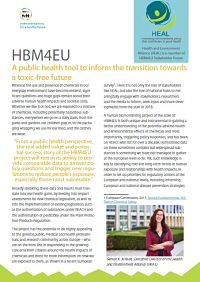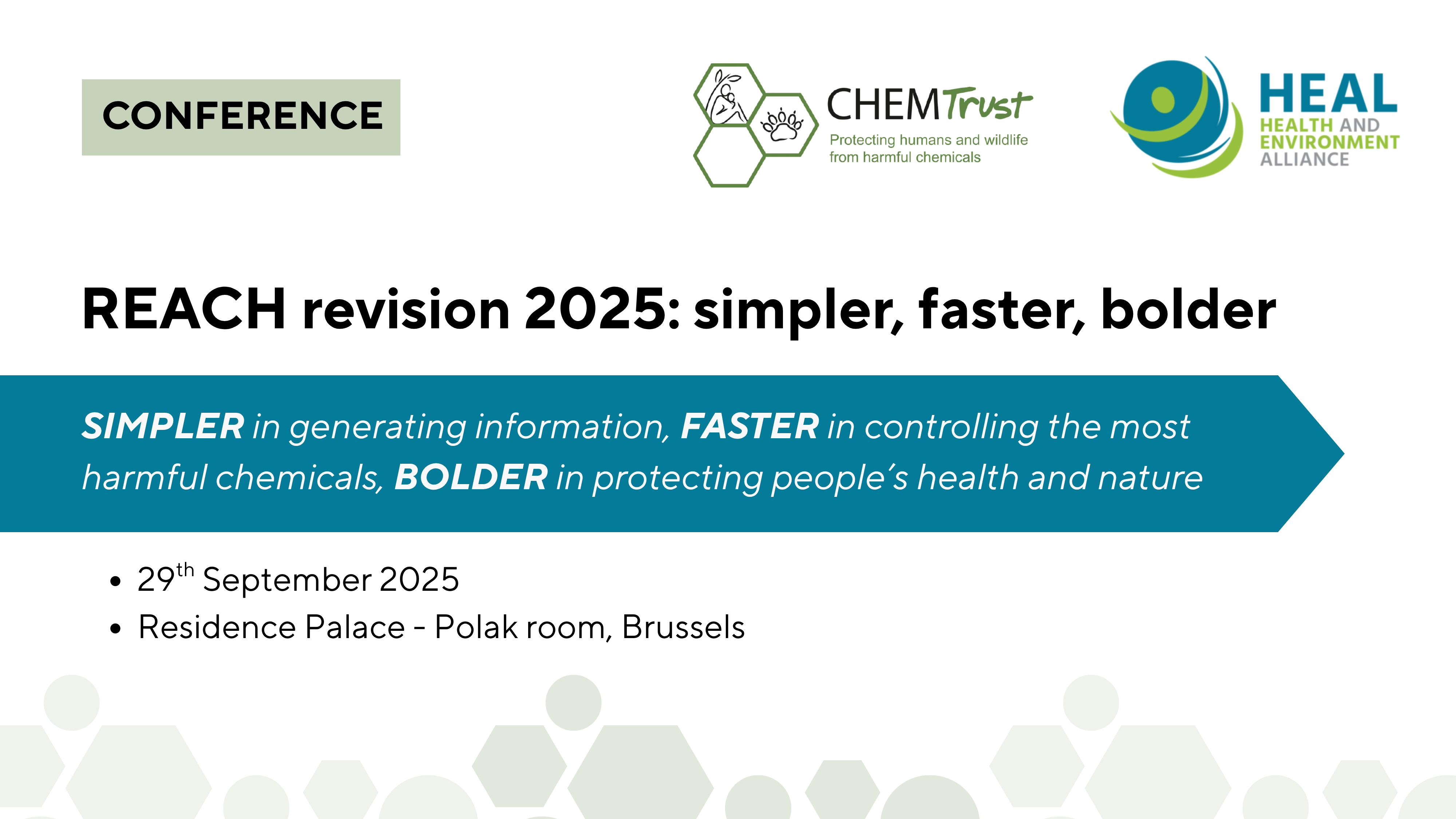The EU Healthy Air Coalition (EUHAC), a coalition of diverse constituencies of the health sector, urges the Commission President to ensure that the next EU budget will help the EU substantially advance towards clean air and the prevention of the major diseases caused by air pollution.
New resources were added to this article on 10 October 2019.
The Health and Environment Alliance (HEAL) is an official stakeholder to HBM4EU, the European Human Biomonitoring Initiative. HBM4EU is a joint effort of 28 countries, the European Environment Agency and the European Commission, aiming to investigate the harmful effects of exposure to chemicals and identify polity opportunities to reduce them. HEAL’s Executive Director Génon K. Jensen reflects on the unique opportunities of the HBM4EU initiative.
 Whereas the use and presence of chemicals in our everyday environment have become evident, significant questions and huge gaps remain about their adverse human health impacts and societal costs. Whether we like it or not, we are exposed to a mixture of chemicals, including potentially hazardous substances, everywhere we go on a daily basis, from the parks and gardens our children play in, to the packaging wrapping we use for our food, and the clothes we wear.
Whereas the use and presence of chemicals in our everyday environment have become evident, significant questions and huge gaps remain about their adverse human health impacts and societal costs. Whether we like it or not, we are exposed to a mixture of chemicals, including potentially hazardous substances, everywhere we go on a daily basis, from the parks and gardens our children play in, to the packaging wrapping we use for our food, and the clothes we wear.
“From a public health perspective, the real added value and potential success story of the HBM4EU project will rest in its ability to provide comparable data to answer policy questions and trigger new regulations to reduce people’s exposure, especially those most vulnerable.”
Broadly speaking, these data and results must translate into real health gains, by feeding into impact assessments for new chemical legislation, as well as into the implementation of existing legislation, such as the authorisation of substances under REACH and the authorisation of pesticides under the Plant Protection Products Regulation.
The project has the potential to be highly appealing to the general public, medical and health professionals, and research community across Europe – who are on the front line in responding to the growing concerns from citizens around the health impacts of chemicals and thirst for more information on how we are exposed to them, as shown in a recent European survey [1]. Here it is not only the role of stakeholders like HEAL, but also the role of national hubs to meaningfully engage with stakeholders, researchers and the media to inform, seek input and share developments from the start in 2018.
A human biomonitoring project of the scale of HBM4EU is both unique and instrumental in gaining a better understanding of the potential adverse health and environmental effects of chemicals and most importantly, triggering policy responses, and has been on HEAL’s wish list for over a decade. Harmonised data on these sometimes complex but widespread substances is something we have not managed to gather at the European level so far. Yet, such knowledge is key to identifying mid and long-term trends in human exposure and relationships with health impacts, in order to set up priorities for regulatory actions at the European and national levels, including informing European and national disease prevention strategies.
Providing real-life exposure to drive preventative, protective policies
Policy decisions about chemical groups such as endocrine disruptors [2] or pesticides [3] are increasingly being debated in the public sphere, yet one ingredient is missing – to what extent is the European population contaminated with this chemical? To fill this data gap for one of the most widely used herbicides, glyphosate, online campaign group, Avaaz organised free glyphosate testing for citizens in Brussels during the debate on the renewal of glyphosate last November.
In this context, human biomonitoring is sorely needed and can be an important public health tool through which public health authorities can provide reliable information to citizens about their exposure, enabling citizens to take appropriate measures to reduce their exposure to substances impacting on health.
When the health costs of environmental chemicals – including neurotoxicants or endocrine disruptors – are estimated to be up to 10% of global GDP [4], there is also a strong economic case to justify investments in developing scientific understanding about our exposure to both single chemicals and mixtures of chemicals, and the relationship between exposure and numerous health effects.
A project such as HBM4EU should also allow legislators to gather uniform data about high volume substances to which we are widely exposed, such as the pesticides glyphosate and chlorpyrifos, both of which have been linked to numerous adverse health effects. Other examples are flame retardants, some bisphenols and emerging substances such as nanomaterials.
Another of HEAL’s longstanding wishes for HBM is being addressed – building knowledge about our real-life exposure to complex mixtures and resulting health impacts. HBM4EU aims to address this need by integrating existing EU projects such as EDCMixRisk and convening a joint workshop entitled “Advancing assessment of chemical mixtures and their risks for human health and the environment”, to be held on 29 – 30 May at Ispra in Italy.
Citizens across Europe are increasingly asking for better information about the chemicals in their environment, as well as the impacts on health and on our broader society. By bridging policy and science, HBM4EU offers a unique opportunity to respond positively to this demand and guide a true transition towards a toxic-free environment and a clean circular economy. We look forward to further contributing to the development of the initiative and will continue to mobilise our environmental health community to help making HBM4EU a success.
Génon K. Jensen, Executive Director of the Health and Environment Alliance (HEAL)
The complete HBM4EU newsletter can be read online here.
HEAL participated in the 3rd HBM4EU Stakeholder Forum meeting in Berlin, on 10 October 2019. Our presentation at this forum is available for download.


